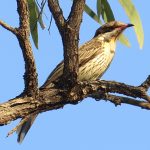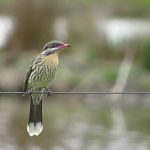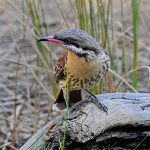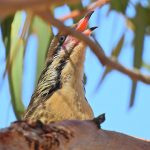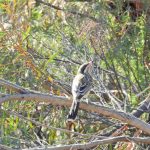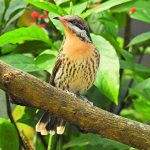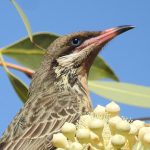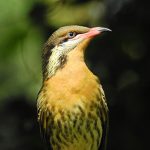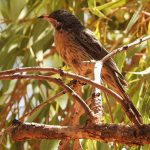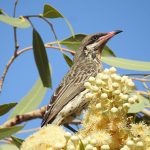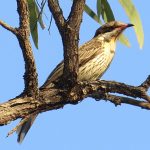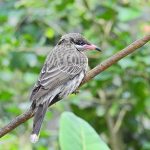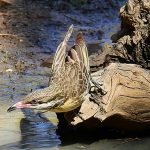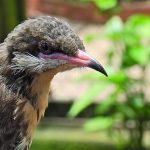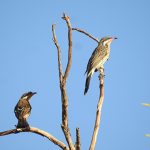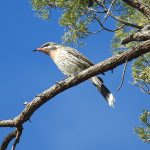SPINY-CHEEKED HONEYEATER
The Spiny-cheeked Honeyeater is specifically found in the arid and semi-arid regions of the continent.
Spiny-cheeked Honeyeaters are medium-sized birds with distinct markings. They have a black crown, nape, and upperparts, while their cheeks are adorned with spiky, bristle-like feathers, which give them their name. Their throat and upper breast are bright rufous (reddish-brown), while the rest of the underparts are white. They also have a noticeable white eye-ring.
These honeyeaters are primarily found in central and southern Australia, as well as parts of Western Australia, South Australia, and Queensland. Their range often corresponds to arid and semi-arid habitats, such as mallee woodlands and scrublands.
Spiny-cheeked Honeyeaters inhabit a variety of arid and semi-arid habitats, including mallee eucalypt woodlands, mulga woodlands, and acacia scrublands. They are well adapted to these harsh environments.
Their diet mainly consists of nectar from a wide range of flowering plants. They also consume insects and other small invertebrates, especially during the breeding season. They use their specialized brush-tipped tongues to extract nectar from flowers.
Spiny-cheeked Honeyeaters are known for their agility and acrobatic foraging behaviors. They often hover near flowers while feeding and are skilled at extracting nectar from tubular flowers.
Breeding usually occurs in the spring and early summer months. They build cup-shaped nests in shrubs or trees, typically placing them at moderate heights. The female lays eggs, and both parents share incubation and chick-rearing duties.
The Spiny-cheeked Honeyeater is a unique and fascinating bird species, well adapted to the challenging conditions of Australia’s arid interior. Their distinctive appearance, foraging behaviors, and role in pollination make them an interesting part of Australia’s avian biodiversity.

